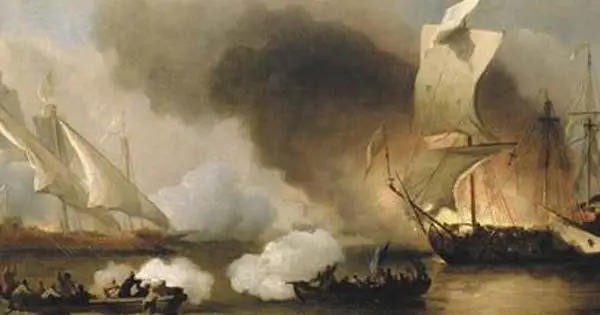Horror descended on the southern Irish fishing village of Baltimore during the summer of 1631, when locals were attacked and kidnapped by pirates.
The residents of the village, near Cork, were then sold into slavery in northern Africa.
The story is told in the book ‘The Stolen Village: Baltimore and the Barbary Pirates’ by Des Ekin.
Ekin told the Irish Times about his time researching the book.
He said: “I stumbled on a list of the people who were taken into slavery.
“One man lost his wife and seven sons. Another man lost his two children and his pregnant wife. And this just bowled me over, because these were real people – not just statistics from a history book. I just felt I had to tell their story.”
During the early 1600s, the southern coast of Ireland was rife with pirates. There was a base at Leamcon, which was across the bay from Baltimore.
Nine ships and around 400 men were based at Leamcon, while pirates were also active at nearby Sherkin Island, which was right on Baltimore’s doorstep.
The unfortunate villages had become used to having to put up with pirates coming to their village but nothing prepared them for the horror of June 20 1631.
Dutch, Algerian and Ottoman Turk pirates launched a covert attack and captured 107 villagers. Most of them were English settlers, but there were also several local Irish people.
The pirates didn’t just kidnap adults – around 50 children were also captured.
The children were separated from their parents during the journey to Algiers. Many slaves were ‘condemned to the oar’ – meaning they were forced to work the galley ship.
They would be starved and beaten by slave drivers and forced to work half naked as they powered the ship to their own doom.
They were sometimes worked until they dropped dead – at which point their bodies would be dumped into the sea.
The destination was a huge slave market in Algiers, where white European slaves were highly sought after.
While some slaves were treated with extreme cruelty, many others were given a chance to earn money and even improve their social status.
Eskin said: “A slave owner would say, ‘Okay, I can either have this guy working flat out and dying in a couple of years – or I can set him up in a trade and he can give me a certain amount of his income and save towards his own freedom’.
“Male slaves had the opportunity to advance in society; in fact, there have been some quite amazing cases of Irish slaves who rose to quite staggering heights and positions of power.”
The women didn’t have the same opportunities. Most were put to work as domestic slaves. Some of the most beautiful became concubines of the Ottoman Sultan in Constantinople.
Some of the female slaves converted to Islam and got married. They would have had a relatively pleasant life, living with their husbands and families in Algiers, which was a civilised city for the era.
A decade and a half after the slaves had been captured, the British government paid their ransom and planned to bring them home.
An envoy was sent to Algiers and the slave owners were repaid the money they had spent at the slave market.
However, only two out of the 105 slaves who had been captured actually applied for ransom.
Ekin said: “Algiers was a healthy city, and most of them were young people, or even children. I imagine most of them would simply have made the best of a bad situation and settled into their new home.”
The real life mystery of what Maureen O’Hara whispered to make John Wayne look so shocked
Action hero Tom Cruise was once attacked by an old man in a Kerry pub
Billy Connolly says public should ignore politicians and listen to comedians
